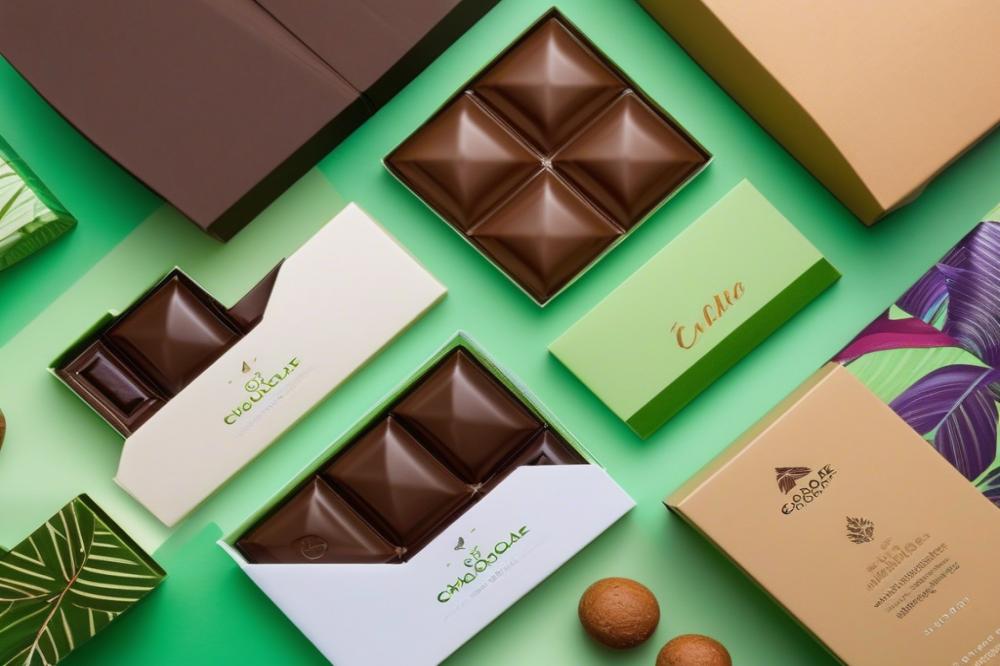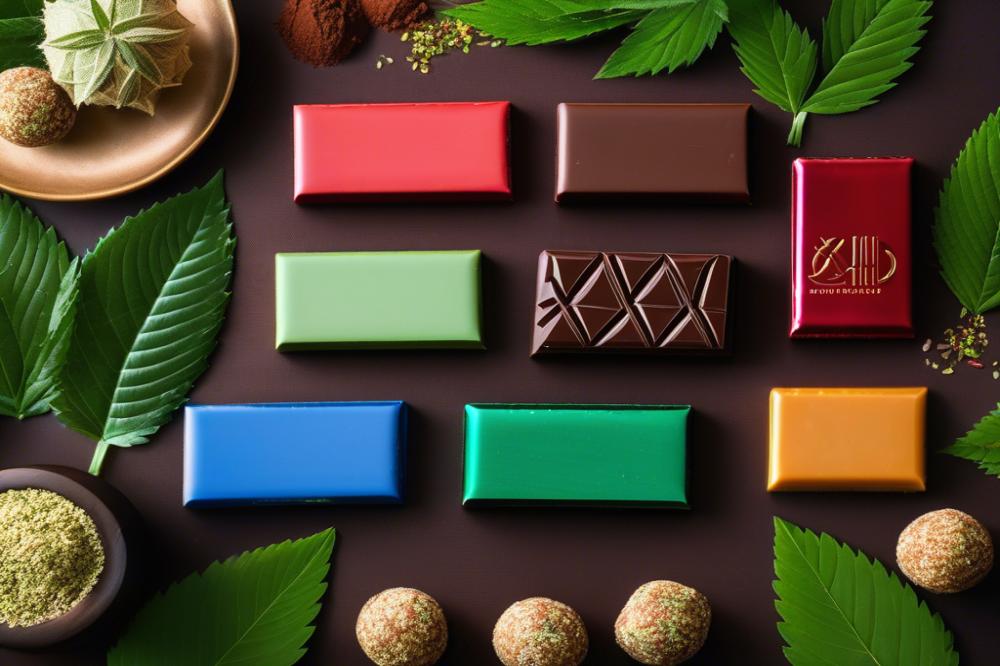Introduction
The chocolate industry is witnessing exciting changes. With more consumers worried about their environmental footprint, there’s a growing demand for sustainable practices. Eco-conscious consumers are increasingly seeking products that align with their values. Chocolate makers must respond to this shift.
One major issue in this transformation is packaging waste. Traditional wrappers often end up in landfills, contributing to pollution. This waste problem needs urgent attention. Eco-friendly alternatives are not just a trend; they are essential for a healthier planet. By focusing on waste reduction, companies can make a significant impact on environmental health.
Packaging innovation is key in addressing these challenges. The introduction of biodegradable chocolate packaging could revolutionize how treats are enjoyed. Using compostable materials can reduce the burden on our planet. Shifting to renewable resources in packaging will not only help the industry but also benefit the earth. Food packaging solutions that are environmentally friendly must become the norm, not the exception.
In light of all these factors, it’s clear that sustainable packaging will play a crucial role in the future of the chocolate industry. Companies willing to embrace change will stand out. They can attract customers who value products that contribute to a more sustainable world. Innovation in packaging can lead to a positive cycle of responsible consumption.
Understanding biodegradable chocolate packaging

Biodegradable chocolate packaging refers to materials that can break down naturally without leaving behind harmful residues. This type of packaging is vital because it addresses the growing concerns about waste and pollution. Unlike traditional wrappers that may linger in landfills for decades, these innovative solutions can decompose, reducing environmental harm.
Several types of biodegradable materials are being researched and utilized in food packaging solutions for the chocolate industry. compostable materials like plant starch, cellulose, and even mycelium are gaining attention. These materials offer an alternative to plastic, as they can be created from renewable resources. Such innovations represent a significant shift in how we think of packaging and its role in sustainability.
Comparing these newer options to conventional packaging highlights notable environmental drawbacks. Traditional wrappers, made from plastic and aluminum, contribute significantly to global waste. They take ages to decompose and often end up in oceans or ecosystems, harming wildlife along the way. This stark contrast prompts eco-conscious consumers to seek brands that embrace sustainable practices.
Many companies are now exploring packaging innovation to meet this demand for greener options. By investing in biodegradable materials, they reduce their carbon footprint while appealing to a growing market of environmentally friendly shoppers. The chocolate industry, in particular, is seeing this shift as an opportunity to stand out. Environmental responsibility not only attracts consumers but can also foster loyalty. Consumers want to support brands that align with their values concerning waste reduction.
Choosing biodegradable options means prioritizing health for our planet. Consumers are often unaware of the long-term impact of packaging waste. Educational efforts can help bridge this gap, paving the way for broader acceptance of these eco-friendly alternatives. As the industry continues to evolve, partnerships with sustainable suppliers will enhance the overall effectiveness of biodegradable chocolate packaging.
Innovations in Packaging Materials

Advances in compostable materials are revolutionizing the chocolate industry. Companies are actively seeking ways to reduce environmental impact. Packaging innovation is at the forefront, as brands explore fully biodegradable options. Such efforts aim to meet the growing demand from eco-conscious consumers.
New technologies have emerged that focus on renewable resources. Researchers are developing novel materials derived from plants and other organic sources. These biodegradable materials break down naturally, minimizing waste. This is a significant shift from traditional plastic packaging which contributes to pollution.
Brands like Alter Eco lead the way by using compostable wrappers. Their commitment to sustainable practices sets a benchmark in the market. Another example is Green & Black’s, which has adopted packaging made from biodegradable films. Such companies recognize the growing importance of environmental stewardship among their customers.
Food packaging solutions are evolving rapidly. Initiatives like these not only cater to consumer demands but also promote waste reduction. By using compostable materials, companies can offer an appealing product while protecting the planet. The chocolate industry is beginning to embrace this change with enthusiasm.
Innovative packaging methods, such as plant-based inks and adhesives, also play a role. These elements enhance the overall sustainability of the products. By moving away from harmful substances, brands show their dedication to both quality and the environment. As more companies adopt these techniques, the future looks promising.
Every step toward environmentally friendly packaging represents progress. For brands that want to stand out, embracing these developments can lead to a competitive edge. As consumers increasingly favor eco-conscious choices, the pressure to innovate rises. The shift toward biodegradable chocolate packaging is not merely a trend; it is essential for long-term success.
Impact on the Chocolate Industry

Packaging innovation is becoming increasingly important in the chocolate industry. Many consumers now prefer products that use environmentally friendly materials. This shift reflects a growing awareness of the impact of waste on our planet. Introducing biodegradable chocolate packaging can grab the attention of eco-conscious consumers.
Modern shoppers often look for brands that align with their values. For those who prioritize sustainability, compostable materials become a significant factor in their purchasing decisions. Biodegradable materials not only help reduce waste but also communicate a brand’s commitment to responsible practices. As a result, brands that adopt these solutions may experience increased loyalty from their customers.
Brand reputation can greatly benefit from sustainable practices. When a company makes efforts to minimize its ecological footprint, it sends a clear message to its audience. Trust forms when consumers see that a brand cares about more than just profit. This connection can lead to long-lasting relationships and repeat purchases.
Research indicates that brands using renewable resources tend to attract more attention in a crowded market. Packaging choices can differentiate one chocolate brand from another. Eco-conscious consumers may feel compelled to choose a product that showcases commitment to waste reduction. By offering biodegradable packaging, companies not only meet consumer demand but also position themselves as leaders in sustainability.
As market trends shift towards sustainable solutions, chocolate manufacturers must adapt. Engaging with consumers on their values can lead to significant advantages. Emphasizing eco-friendly packaging can enhance visibility and drive sales. In the long run, embracing these new materials may be crucial for staying competitive.
Challenges and Considerations
Producing fully biodegradable chocolate packaging comes with several hurdles. One major concern involves the cost of materials. Biodegradable materials can be more expensive than traditional options. In the chocolate industry, maintaining profit margins while investing in packaging innovation is a fine balance.
Effectiveness is another key issue. Packaging not only needs to be eco-friendly but also must protect the product. Chocolates are sensitive to temperature and humidity. The challenge lies in ensuring that compostable materials can provide adequate protection. Innovative solutions must be found to create durable, yet environmentally friendly, odds.
Market readiness is a hot topic in discussions around this change. Eco-conscious consumers are eager for sustainable practices. However, not all chocolate manufacturers are prepared to shift their packaging strategies. Education is vital in this transitional phase. Informing consumers about the benefits of using compostable materials can help drive demand.
Regulatory factors also play a role. Compliance with food safety standards is critical. The ingredients in biodegradable packaging must not pose health risks. Developing a product that meets both environmental goals and safety regulations can be complex. It often requires collaboration among manufacturers, regulators, and sustainability experts.
Lastly, marketing biodegradable products can be a challenge. Communicating the importance of waste reduction is essential. Additionally, brands must find effective ways to position their new packaging as a selling point. This requires a shift in strategy for many businesses in the chocolate sector. Understanding what drives consumer interest is key to successful adoption of new food packaging solutions.
As the industry evolves, these challenges present unique opportunities for growth and change. Combining sustainable methods with consumer needs may reshape the future of chocolate packaging.
Future Trends in Sustainable Chocolate Packaging
The chocolate industry is at a crossroads. Increasingly, eco-conscious consumers demand better choices. These consumers are looking for products that respect the planet while still delivering delicious treats. Packaging innovation is essential for brands to meet these growing expectations.
Renewable resources are becoming a key area of focus. Manufacturers are exploring plant-based materials that can decompose naturally. These compostable materials could replace traditional plastics, which contribute significantly to environmental waste. Imagine chocolate being wrapped in packaging that not only protects it but also nourishes the earth once it’s discarded.
Collaboration among various manufacturers is crucial. By working together, brands can share knowledge and expertise. This cooperation can lead to cutting-edge food packaging solutions that prioritize both function and sustainability. No single company has all the answers, so pooling resources could speed up the innovation process.
Biodegradable materials are being researched and tested continually. This research opens doors to options that were previously unimaginable. Some companies are already experimenting with seaweed or mushrooms as alternatives to plastic. This type of creativity is vital to making a real difference in waste reduction.
Lastly, as the industry grows, the potential for improved sustainable practices expands as well. Companies that take these steps can build loyalty among their customer base. By demonstrating a genuine commitment to the environment, they can attract more eco-conscious consumers. This shift not only benefits the planet but can also lead to increased sales as demand for sustainable options rises.
The future looks promising for chocolate packaging. With renewed focus on nature-friendly choices, the path forward is clear. The industry stands ready to embrace change, creating a world where tasty treats and sustainability go hand in hand.
Final Thoughts on Sustainable Chocolate Packaging
The importance of fully biodegradable packaging in the chocolate industry cannot be overstated. This innovative approach supports environmental responsibility. With plastic waste causing significant harm to our planet, chocolate makers have a unique opportunity to lead by example. People want eco-conscious options, and the shift to compostable materials meets that demand.
Many consumers are increasingly aware of their impact on the environment. They seek products that align with their values. By investing in sustainable packaging, chocolate companies can help reduce waste and promote a cleaner planet. Imagine a world where indulging in sweet treats does not come at a cost to nature.
In summary, the chocolate industry has the potential to become a champion of waste reduction. Through creative packaging solutions, it can inspire other sectors to follow suit. An environmentally friendly focus not only attracts customers but also builds brand loyalty. By embracing these practices, chocolate manufacturers can showcase their commitment to a more sustainable future. The journey towards change may be challenging, but the rewards will resonate for generations to come.



